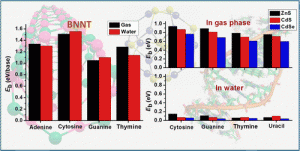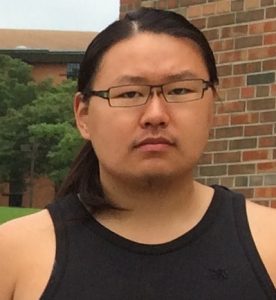Christopher Morrissey and Marcus Ochsendorf started summer research together with Prof. He under the Visiting Faculty Program at Argonne National Laboratory. They are working on the electrochemical reduction of carbon dioxide.
Monthly Archives: May 2017
Scientific Journals
APS journals: PRB PRL Rev. Mod. Phys.
RSC journals: EES JMCA Nanoscale PCCP RSC Advances
ACS journals: ACS AMI ACS Catalysis ACS Nano CM JACS JPCC
AIP journals: APL JAP JCP Phys. Today
IOP journals: JPCM Nanotechnology
Elsevier journals: FlatChem Nano Today
Collaborators
Ravindra Pandey, Michigan Technological University
Peter Zapol, Argonne National Laboratory
Larry Curtiss, Argonne National Laboratory
Science and Christian Faith
2017
- Haiying He and Yesukhei Jagvaral, “Electrochemical Reduction of CO2 on Graphene Supported Transition Metals – Towards Single Atom Catalysts”, Physical Chemistry Chemical Physics, 19, 11436 – 11446 (2017).
- Sanjeev K. Gupta, Haiying He, Igor Lukačević, and Ravindra Pandey, “Spin-dependent electron transport in C and Ge doped BN monolayer”, Physical Chemistry Chemical Physics, 19, 30370 (2017).
2016
- Haiying He, Stephen Sekoulopoulos, and Stan Zygmunt, “Single Electron Activation of CO2 on Graphene-Supported ZnO Nanoclusters: Effects of Doping in Support”, The Journal of Physical Chemistry C, 120 (30), 16732–16740 (2016).
2015
- Zhoufei Wang, Haiying He, William Slough, Ravindra Pandey, and Shashi P. Karna, “Nature of Interaction between Semiconducting Nanostructures and Biomolecules: Chalcogenide QDs and BNNT with DNA Molecules”, The Journal of Physical Chemistry C, 119 (46), 25965–25973 (2015).
- Kelsey Larson, Adam Clark, Allyse Appel, Qingli Dai, Haiying He and Stan Zygmunt, “Surface-Dependence of Interfacial Binding Strength between Zinc Oxide and Graphene”, RSC Advances, 5, 65719-65724 (2015).
- Sanjeev K. Gupta, Haiying He, Chunhui Liu, Ranu Dutta, and Ravindra Pandey, “Interaction of Metallic Clusters with Biologically Active Curcumin Molecules”, Chemical Physics Letters, 636, 163–166 (2015).
- Ashok Kumar, Haiying He, Ravindra Pandey, P. K. Ahluwaliad and K. Tankeshwar, “Pressure and electric field-induced metallization in the phase-engineered ZrX2 (X=S,Se,Te) bilayers”, Physical Chemistry Chemical Physics, 17, 19215-19221 (2015).
Photochemical and Electrochemical CO2 Reduction

The idea of using CO2 as a feedstock and converting it to useful chemicals or fuels is the most appealing among all the CO2 capture, sequestration and utilization strategies. We aim to rationally design photocatalysts and electrocatalysts for CO2 reduction based on first-principles calculations and computational screening.
Nano-Bio Interaction

The fusion of nanotechnology and biology has led to increasing interface of
nanostructured materials with biological molecules. We strive to gain an accurate description and full understanding of the interaction between nanostructures and
biomolecules at the atomic level in their working environment using first-principles approaches.
Yesukhei Jagvaral

Graduate from Physics
Ph. D at Carnegie Mellon University
Email: yesukhei.jagvaral@valpo.edu